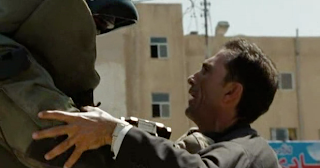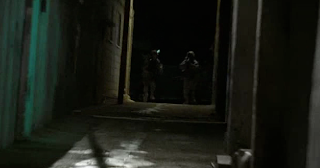Tora! Tora! Tora! Saving Private Ryan (1998) Das Boot--German WW2 Pearl Harbor (2001)
Nationalism sense heroism, sense of justified actions, soldiers words and actions defending one’s own country, seeing the worst in the enemy
Heroism
Saving Private Ryan: Private Ryan: “Tell her that when you found me, I was here and I was with the only brothers I had left and there was no way I’m deserting them.” MS of Sergeant Horvath talking to Captain Miller
Tora! Tora! Tora! LS of Japanese women waving to the pilots passing by. LS of a pilot, the plane, and the surround crewmen clapping. (Great! We just sank Nevada!) OTS to show Furchida putting on the band around his head. Ends with 2S-WS of him and another officer salute to each other.
Pearl Harbor OTS of Major Doolittle talking to Rafe. MS of Doris Miller using the machine gun and shoot down a plane. LS of Rafe shooting down Japanese planes, ends with LS of Danny shooting down Japanese planes. MS of President Roosevelt giving Rafe the badge of honor, ends with ECU of the badge to Rafe. Das Boot-
WS-LS of navy men departing the port from their home base. FS of crewmen in the bunk bed areas while listening to the Captain’s announcement on the change of rest stop from La Rochelle to La Spezia in Italy. Ends with 2S-FS of Captain and Werner talking on the boat’s surface. 2S-WS of Captain talking on the surface of the boat after surviving the attack from British ships.
Extent of showing love for one’s country by directing defending their country or attacking the other through words and action
Saving Private Ryan: LS of old Ryan walking through the cemetery looking at the white crosses. MS to LS of American soldiers walking and looking at Miller’s crew while they are digging through a pile of military tags. LS of Captain Miller running while the rest of the crew follows him.
Tora! Tora! Tora! MS of Furchida welcomed enthusiastically by lots of lower ranked pilots as he gets off his plane. LS of men cheering after speech given by a high commander. CU of men bowing down to a statue before invading Pearl Harbor.
Pearl Harbor MS of a Japanese pilot getting dressed for invasion of Pearl Harbor. BEV of Japanese planes bombing American navy ships continuously. ELS of people who were in the water attempting to climb back on the ship. FS of Lieutenant Colonel Doolittle talking to crowd of pilots. CU of Lieutenant Colonel giving a speech to Rafe and Danny.
Das Boot- MCU of Captain during eating with his crewmates OTS of crewman running towards the bunk beds to announce they’ve hit the first one as crewmen cheers. LS of enemy boat sinking and on fire while enemies try to swim towards the U-boat. MS of Nazi officer with his raised up glass of champagne enthusiastic about the U-boats success in sinking enemy ships.
Scenes that help audience feels sympathy or respect for country thus boasting nationalism
Saving Private Ryan:
LS of battle scene between the Germans and the Americans in Omaha. MCU to LS on dead soldiers in the water. WEV of Miller’s crew looking through the pile of military tags.
Tora! Tora! Tora!
LS of Japanese navy formation. LS of American navy formation. MS of Admiral Yamamoto talking in a meeting.
Pearl Harbor
MS of Rafe holding Danny as he is dying. FS of American flag.
Das Boot-
CU of Werner walking after the bombing of La Rochelle and ends with LS of Werner next to the dead Captain.
http://www.rottentomatoes.com/ -Reviews helpful because it gives insight on what audiences thought if the movie boasted nationalism or not
http://www.imdb.com/ -to search for movies as well as to get information about the year it was created, country, etc.
http://www.filmsite.org/warfilms5.html -helped categorize what type of war movie (heroic war movie, epic war movie)
http://www.dasboot.com/story.htm -Background and what the directed intended
http://www.english-online.at/history/kamikaze/kamikaze-suicide-pilots-worldwar.htm -historical context (headband part of uniform that showed nationalism)
http://www.nationalgeographic.com/pearlharbor/ngbeyond/people/index.html -background to some important characters in the pearl harbor
http://allaboutwarmovies.com/tag/pearl-harbor/ -A little blur of comparison between Pearl Harbor and Tora Tora Tora




















